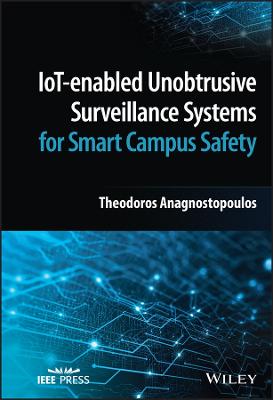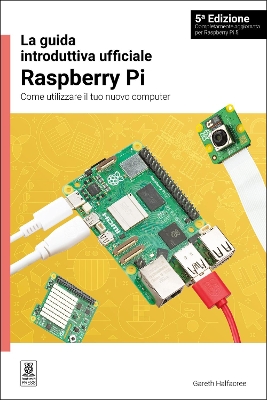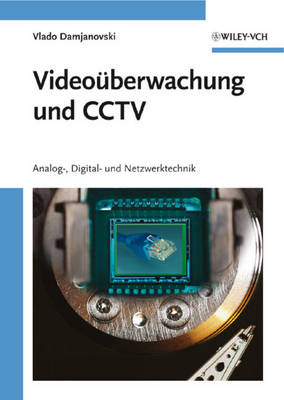IoT-enabled Unobtrusive Surveillance Systems for Smart Campus Safety
 -15%
portes grátis
-15%
portes grátis
IoT-enabled Unobtrusive Surveillance Systems for Smart Campus Safety
Anagnostopoulos, Theodoros
John Wiley & Sons Inc
09/2022
160
Dura
Inglês
9781119903901
15 a 20 dias
666
Descrição não disponível.
Author Biography xi
Preface xiii
1 Introduction 1
1.1 Smart Cities Dimensions and Risks 2
1.2 Smart Campuses Components 2
1.3 Smart Campuses Unobtrusive Surveillance Systems 3
1.4 Smart Campus Safety Systems Survey 3
1.5 Smart Campuses Comparative Assessment 4
1.6 Smart Campus Systems Classification 4
1.7 Smart Campus Safety: A System Architecture 4
1.8 Human Factor as an Unobtrusive Surveillance System's Adoption Parameter for Smart Campus Safety 5
1.9 Smart Campus Surveillance Systems Future Trends and Directions 5
2 Smart City 7
2.1 Smart Cities Dimensions 7
2.1.1 Smart Economy 8
2.1.2 Smart Governance 9
2.1.3 Smart Living 10
2.1.4 Smart Mobility 10
2.1.5 Smart People 11
2.1.6 Smart Environment 12
2.2 Risks Related to Smart Cities 12
2.2.1 Technical Risks 12
2.2.2 Nontechnical Risks 13
2.3 Mitigating Smart Cities Risks 14
2.4 Systems Beyond Smart Cities 15
3 Smart Campus 17
3.1 Smart Campus Components 17
3.1.1 Smart Grid 18
3.1.2 Smart Community Services 20
3.1.3 Smart Management 21
3.1.4 Smart Propagation Services 23
3.1.5 Smart Prosperity 24
3.2 Unobtrusive
Surveillance Campus System 24
4 Unobtrusive Surveillance Systems 27
4.1 Geospatial Internet of Things 27
4.2 Smart Campus Unobtrusive Surveillance 28
4.3 Proposed Taxonomy 28
4.4 Adopted Weighted Scoring Model 34
5 Smart Campus Safety Systems Survey 39
5.1 Systems Not Classified 39
5.2 Systems That Focus on Public Spaces and Smart Parking 46
5.3 Systems That Focus on Smart Buildings, Smart Labs, Public Spaces, and Smart Lighting 48
5.4 Systems That Focus on Public Spaces and Smart Traffic Lights 51
5.5 Systems That Focus on Smart Buildings and Smart Classes 54
5.6 Systems That Focus on Smart Buildings, Public Spaces, Smart Lighting, and Smart Traffic Lights 58
5.7 Systems That Focus on Smart Buildings and Smart Labs 63
5.8 Systems That Focus on Smart Buildings and Public Spaces 67
5.9 Systems That Focus on Smart Campus Ambient Intelligence and User Context 79
5.10 Systems That Focus on Smart Campus Low-Power Wide Area Networks Technology 87
6 Comparative Assessment 97
7 Classification and Proposed Solution 103
7.1 Weighting Process 103
7.2 Classification Process 106
8 Smart Campus Spatiotemporal Authentication Unobtrusive Surveillance System for Smart Campus Safety 111
8.1 Smart Campus Spatiotemporal Authentication Unobtrusive Surveillance System 112
8.2 Smart Campus Safety: A System Architecture 116
9 Human Factor as an Unobtrusive Surveillance System's Adoption Parameter for Smart Campus Safety 127
9.1 Ethical Dilemma of Adopting an Unobtrusive Surveillance System 127
9.2 Degree of Free Will Engagement and Negotiation with an Unobtrusive System 128
10 Smart Campus Surveillance Systems Future Trends and Directions 131
References 133
Index 143
Preface xiii
1 Introduction 1
1.1 Smart Cities Dimensions and Risks 2
1.2 Smart Campuses Components 2
1.3 Smart Campuses Unobtrusive Surveillance Systems 3
1.4 Smart Campus Safety Systems Survey 3
1.5 Smart Campuses Comparative Assessment 4
1.6 Smart Campus Systems Classification 4
1.7 Smart Campus Safety: A System Architecture 4
1.8 Human Factor as an Unobtrusive Surveillance System's Adoption Parameter for Smart Campus Safety 5
1.9 Smart Campus Surveillance Systems Future Trends and Directions 5
2 Smart City 7
2.1 Smart Cities Dimensions 7
2.1.1 Smart Economy 8
2.1.2 Smart Governance 9
2.1.3 Smart Living 10
2.1.4 Smart Mobility 10
2.1.5 Smart People 11
2.1.6 Smart Environment 12
2.2 Risks Related to Smart Cities 12
2.2.1 Technical Risks 12
2.2.2 Nontechnical Risks 13
2.3 Mitigating Smart Cities Risks 14
2.4 Systems Beyond Smart Cities 15
3 Smart Campus 17
3.1 Smart Campus Components 17
3.1.1 Smart Grid 18
3.1.2 Smart Community Services 20
3.1.3 Smart Management 21
3.1.4 Smart Propagation Services 23
3.1.5 Smart Prosperity 24
3.2 Unobtrusive
Surveillance Campus System 24
4 Unobtrusive Surveillance Systems 27
4.1 Geospatial Internet of Things 27
4.2 Smart Campus Unobtrusive Surveillance 28
4.3 Proposed Taxonomy 28
4.4 Adopted Weighted Scoring Model 34
5 Smart Campus Safety Systems Survey 39
5.1 Systems Not Classified 39
5.2 Systems That Focus on Public Spaces and Smart Parking 46
5.3 Systems That Focus on Smart Buildings, Smart Labs, Public Spaces, and Smart Lighting 48
5.4 Systems That Focus on Public Spaces and Smart Traffic Lights 51
5.5 Systems That Focus on Smart Buildings and Smart Classes 54
5.6 Systems That Focus on Smart Buildings, Public Spaces, Smart Lighting, and Smart Traffic Lights 58
5.7 Systems That Focus on Smart Buildings and Smart Labs 63
5.8 Systems That Focus on Smart Buildings and Public Spaces 67
5.9 Systems That Focus on Smart Campus Ambient Intelligence and User Context 79
5.10 Systems That Focus on Smart Campus Low-Power Wide Area Networks Technology 87
6 Comparative Assessment 97
7 Classification and Proposed Solution 103
7.1 Weighting Process 103
7.2 Classification Process 106
8 Smart Campus Spatiotemporal Authentication Unobtrusive Surveillance System for Smart Campus Safety 111
8.1 Smart Campus Spatiotemporal Authentication Unobtrusive Surveillance System 112
8.2 Smart Campus Safety: A System Architecture 116
9 Human Factor as an Unobtrusive Surveillance System's Adoption Parameter for Smart Campus Safety 127
9.1 Ethical Dilemma of Adopting an Unobtrusive Surveillance System 127
9.2 Degree of Free Will Engagement and Negotiation with an Unobtrusive System 128
10 Smart Campus Surveillance Systems Future Trends and Directions 131
References 133
Index 143
Este título pertence ao(s) assunto(s) indicados(s). Para ver outros títulos clique no assunto desejado.
Smart Campus; Unobtrusive Surveillance Systems; IoT; AI; Robotics; Software Analytics; Security; Privacy; Social Policy; Antiterrorism Protection; Research Methodology; Weighted Scoring Model; privacy surveillance; consumer surveillance
Author Biography xi
Preface xiii
1 Introduction 1
1.1 Smart Cities Dimensions and Risks 2
1.2 Smart Campuses Components 2
1.3 Smart Campuses Unobtrusive Surveillance Systems 3
1.4 Smart Campus Safety Systems Survey 3
1.5 Smart Campuses Comparative Assessment 4
1.6 Smart Campus Systems Classification 4
1.7 Smart Campus Safety: A System Architecture 4
1.8 Human Factor as an Unobtrusive Surveillance System's Adoption Parameter for Smart Campus Safety 5
1.9 Smart Campus Surveillance Systems Future Trends and Directions 5
2 Smart City 7
2.1 Smart Cities Dimensions 7
2.1.1 Smart Economy 8
2.1.2 Smart Governance 9
2.1.3 Smart Living 10
2.1.4 Smart Mobility 10
2.1.5 Smart People 11
2.1.6 Smart Environment 12
2.2 Risks Related to Smart Cities 12
2.2.1 Technical Risks 12
2.2.2 Nontechnical Risks 13
2.3 Mitigating Smart Cities Risks 14
2.4 Systems Beyond Smart Cities 15
3 Smart Campus 17
3.1 Smart Campus Components 17
3.1.1 Smart Grid 18
3.1.2 Smart Community Services 20
3.1.3 Smart Management 21
3.1.4 Smart Propagation Services 23
3.1.5 Smart Prosperity 24
3.2 Unobtrusive
Surveillance Campus System 24
4 Unobtrusive Surveillance Systems 27
4.1 Geospatial Internet of Things 27
4.2 Smart Campus Unobtrusive Surveillance 28
4.3 Proposed Taxonomy 28
4.4 Adopted Weighted Scoring Model 34
5 Smart Campus Safety Systems Survey 39
5.1 Systems Not Classified 39
5.2 Systems That Focus on Public Spaces and Smart Parking 46
5.3 Systems That Focus on Smart Buildings, Smart Labs, Public Spaces, and Smart Lighting 48
5.4 Systems That Focus on Public Spaces and Smart Traffic Lights 51
5.5 Systems That Focus on Smart Buildings and Smart Classes 54
5.6 Systems That Focus on Smart Buildings, Public Spaces, Smart Lighting, and Smart Traffic Lights 58
5.7 Systems That Focus on Smart Buildings and Smart Labs 63
5.8 Systems That Focus on Smart Buildings and Public Spaces 67
5.9 Systems That Focus on Smart Campus Ambient Intelligence and User Context 79
5.10 Systems That Focus on Smart Campus Low-Power Wide Area Networks Technology 87
6 Comparative Assessment 97
7 Classification and Proposed Solution 103
7.1 Weighting Process 103
7.2 Classification Process 106
8 Smart Campus Spatiotemporal Authentication Unobtrusive Surveillance System for Smart Campus Safety 111
8.1 Smart Campus Spatiotemporal Authentication Unobtrusive Surveillance System 112
8.2 Smart Campus Safety: A System Architecture 116
9 Human Factor as an Unobtrusive Surveillance System's Adoption Parameter for Smart Campus Safety 127
9.1 Ethical Dilemma of Adopting an Unobtrusive Surveillance System 127
9.2 Degree of Free Will Engagement and Negotiation with an Unobtrusive System 128
10 Smart Campus Surveillance Systems Future Trends and Directions 131
References 133
Index 143
Preface xiii
1 Introduction 1
1.1 Smart Cities Dimensions and Risks 2
1.2 Smart Campuses Components 2
1.3 Smart Campuses Unobtrusive Surveillance Systems 3
1.4 Smart Campus Safety Systems Survey 3
1.5 Smart Campuses Comparative Assessment 4
1.6 Smart Campus Systems Classification 4
1.7 Smart Campus Safety: A System Architecture 4
1.8 Human Factor as an Unobtrusive Surveillance System's Adoption Parameter for Smart Campus Safety 5
1.9 Smart Campus Surveillance Systems Future Trends and Directions 5
2 Smart City 7
2.1 Smart Cities Dimensions 7
2.1.1 Smart Economy 8
2.1.2 Smart Governance 9
2.1.3 Smart Living 10
2.1.4 Smart Mobility 10
2.1.5 Smart People 11
2.1.6 Smart Environment 12
2.2 Risks Related to Smart Cities 12
2.2.1 Technical Risks 12
2.2.2 Nontechnical Risks 13
2.3 Mitigating Smart Cities Risks 14
2.4 Systems Beyond Smart Cities 15
3 Smart Campus 17
3.1 Smart Campus Components 17
3.1.1 Smart Grid 18
3.1.2 Smart Community Services 20
3.1.3 Smart Management 21
3.1.4 Smart Propagation Services 23
3.1.5 Smart Prosperity 24
3.2 Unobtrusive
Surveillance Campus System 24
4 Unobtrusive Surveillance Systems 27
4.1 Geospatial Internet of Things 27
4.2 Smart Campus Unobtrusive Surveillance 28
4.3 Proposed Taxonomy 28
4.4 Adopted Weighted Scoring Model 34
5 Smart Campus Safety Systems Survey 39
5.1 Systems Not Classified 39
5.2 Systems That Focus on Public Spaces and Smart Parking 46
5.3 Systems That Focus on Smart Buildings, Smart Labs, Public Spaces, and Smart Lighting 48
5.4 Systems That Focus on Public Spaces and Smart Traffic Lights 51
5.5 Systems That Focus on Smart Buildings and Smart Classes 54
5.6 Systems That Focus on Smart Buildings, Public Spaces, Smart Lighting, and Smart Traffic Lights 58
5.7 Systems That Focus on Smart Buildings and Smart Labs 63
5.8 Systems That Focus on Smart Buildings and Public Spaces 67
5.9 Systems That Focus on Smart Campus Ambient Intelligence and User Context 79
5.10 Systems That Focus on Smart Campus Low-Power Wide Area Networks Technology 87
6 Comparative Assessment 97
7 Classification and Proposed Solution 103
7.1 Weighting Process 103
7.2 Classification Process 106
8 Smart Campus Spatiotemporal Authentication Unobtrusive Surveillance System for Smart Campus Safety 111
8.1 Smart Campus Spatiotemporal Authentication Unobtrusive Surveillance System 112
8.2 Smart Campus Safety: A System Architecture 116
9 Human Factor as an Unobtrusive Surveillance System's Adoption Parameter for Smart Campus Safety 127
9.1 Ethical Dilemma of Adopting an Unobtrusive Surveillance System 127
9.2 Degree of Free Will Engagement and Negotiation with an Unobtrusive System 128
10 Smart Campus Surveillance Systems Future Trends and Directions 131
References 133
Index 143
Este título pertence ao(s) assunto(s) indicados(s). Para ver outros títulos clique no assunto desejado.







